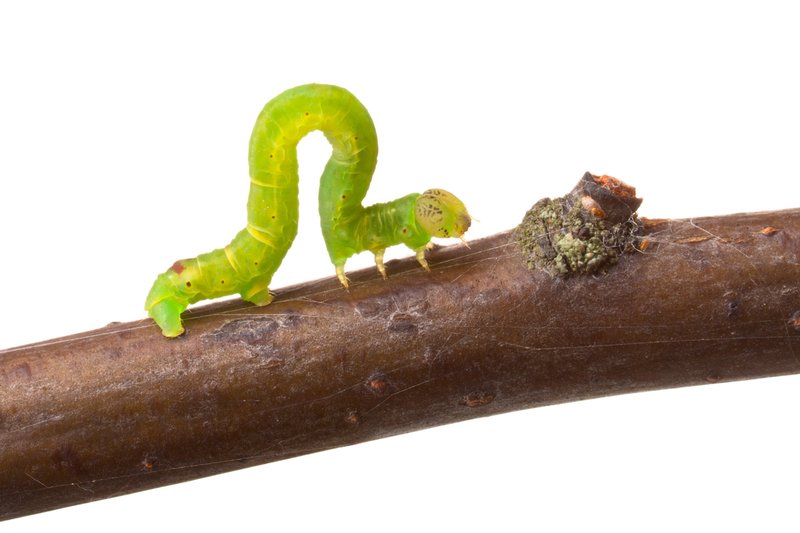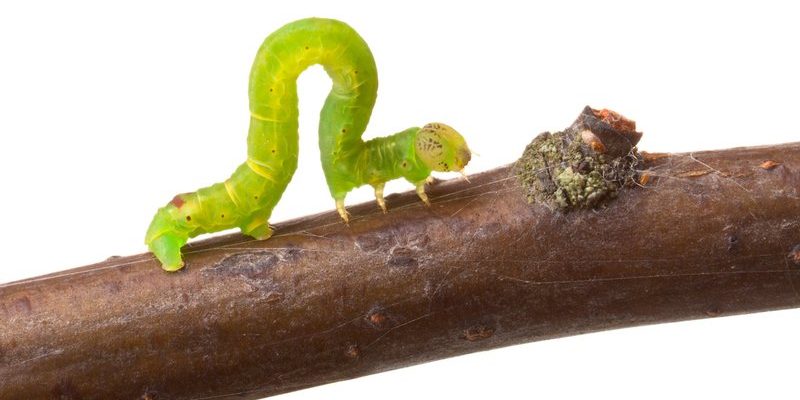
Before we get too far into the nitty-gritty details, let’s clear up what an inchworm actually is. These critters are the larvae of certain moths, and they’re known for their unique looping gait. Think of them as the caterpillar version of a tightrope walker. With about 2,000 species out there, they can be found in a variety of habitats, from gardens to forests. Now, let’s unravel the extraordinary details of their anatomy and how it helps them move.
Understanding Inchworm Anatomy
To appreciate how inchworms move, it’s essential first to understand what makes them tick—or wriggle, in this case. Inchworms have a simple body structure, primarily made up of three parts: the head, thorax, and abdomen. Their bodies are soft and elongated, which helps them maneuver through the foliage.
Inchworms don’t have traditional legs like many other insects. Instead, they sport **three pairs of true legs** located on the thorax, which help them grip surfaces as they move. These legs, combined with specialized structures known as prolegs, enable them to create that distinctive looping motion. Prolegs are like little stubs that don’t function like normal legs; they help inchworms hold onto substrates, making it easier to inch across branches and leaves.
The Role of Legs in Movement
Now, let’s zoom in on those true legs. Inchworms have six **true legs**, just like other insects, but they use them in a unique way. These legs are designed for gripping. When an inchworm moves, it extends its front legs first, pulls its body forward, and then retracts its rear legs. It’s a bit like a slinky toy moving down the stairs—one part goes forward while the rest follows along.
When you watch an inchworm in action, you might notice that it often looks like it’s measuring the distance it has to travel. That’s where the name comes from! This leg movement allows them to keep a low profile, making them less visible to predators. In fact, many inchworms have colors that blend in with their environment, which is a clever survival tactic.
How Inchworms Use Their Legs
Inchworms rely on their true legs for several crucial functions:
- Gripping: Their legs help them hold onto branches, so they don’t fall as they inch their way along.
- Movement: The legs provide the strength they need to pull their bodies forward in that characteristic looping motion.
- Stability: The legs act as anchors, allowing them to maneuver without tipping over easily.
Prolegs: The Unsung Heroes
While true legs get a lot of attention, the prolegs play a critical role in an inchworm’s life. Prolegs are soft, fleshy appendages located on the rear segments of the body. Think of them as the inchworm’s little helpers. They don’t have joints like true legs, but they are very effective for gripping surfaces.
Prolegs function like a suction cup, allowing inchworms to anchor themselves as they pull their front sections forward. This gives them that iconic looping motion, making them look like they’re dancing their way through the leaves.
Why Prolegs Matter
So, why should you care about prolegs? Here are a few reasons:
- Climbing: Prolegs help inchworms scale vertical surfaces, which is essential for reaching leaves at different heights.
- Defense: When threatened, inchworms can loop their bodies and coat themselves against twigs, making them difficult to spot.
- Stability: Just like true legs, prolegs provide stability and support during movement.
Inchworm Movement Explained
Inchworm movement is a beautiful blend of mechanics and biology. It’s fascinating to see how their anatomy dictates the way they move. The combination of true legs and prolegs allows inchworms to perform their signature “inching” motion.
Let’s break down how an inchworm gets from point A to point B. First, they extend their true legs, anchoring themselves to the surface. Then, they contract their bodies to pull the rear end forward. This two-part process creates a wave-like motion that propels them ahead.
Here’s a thought: have you ever tried to describe this unique movement to someone? It’s like watching a little green snake slither—only the inchworm is taking tiny, measured steps instead of slithering.
The Importance of Motion for Survival
Understanding how inchworms move isn’t just a fun fact; it’s crucial for their survival in the wild. They use this unique method of locomotion to navigate their environment, find food, and avoid detection by predators.
Inchworms usually feed on leaves, and their slow, deliberate movement helps them stay hidden from birds and other predators that might turn them into a snack. Their defensive strategy often includes blending in with their surroundings, mimicking twigs or even leaves. That’s nature playing a clever game of hide and seek!
Inchworms are more than just little green critters on a branch; they’re a remarkable example of adaptation and survival. Their unique anatomy, with its combination of true legs and prolegs, allows them to move in ways that are not only effective for feeding but also for avoiding predators.
Next time you see an inchworm in action, take a moment to appreciate the engineering behind that simple yet fascinating movement. These little guys remind us of just how intricate and amazing nature can be. So, whether you’re an avid gardener or just a curious observer, keep your eyes peeled for these charming little inching machines.

